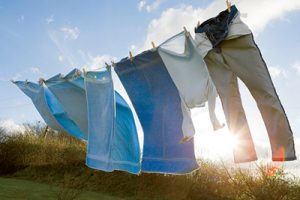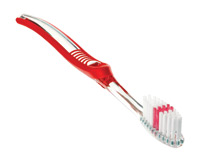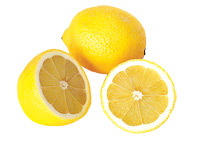Home Remedies Both Old & New
Story by Jillian Randel
Walk through the cleaning aisle in the grocery store and you will find shelves upon shelves stocked with cleaning products.
Gels meant to clean the toilet bowl, window spray for the mirror, a leave-on concoction for the shower and a separate solution for the sink. Four bottles of chemically-laden cleaning agents meant to clean one tiny room in your house… what happened to cleaning the old fashioned way—with vinegar, baking soda and lemons?
The EPA listed household cleaning products as a contributing factor to poor indoor air quality. Volatile Organic Compounds (VOCs), are gases emitted from chemical substances—including home cleaning products. VOCs have documented short and long-term health effects associated with organs such as the liver and kidneys, as well as respiratory and reproductive systems.
Household cleaning products also contribute to polluted water systems. Every day, runoff from household activities enters our lakes, rivers and streams as we wash and flush chemicals down our drains. Using nontoxic household products whenever possible is an important way to stop water pollution in our communities.
Vinegar, baking soda and lemons are inexpensive, healthy for you and have a variety of uses around the house. Just one of these three can clean an entire room in your house. So, grab your rags, turn on your favorite tunes and get scrubbing!
Vinegar
White vinegar is made by fermenting and then purifying corn alcohol. Vinegar’s high acidity makes it an effective home cleaning agent for killing mold, bacteria and other germs. It also leaves surfaces shiny and clean without leaving behind any chemical residue. Five uses for vinegar include:
1. Mix equal parts vinegar and water to clean no-wax floors, windows, refrigerators, microwaves, kitchen and bathroom countertops, grills and cutting boards.
2. Add 1 cup of vinegar to your toilet bowl, let sit 1/2 an hour and scrub clean.
3. Add 1 cup vinegar to the bottom of your dishwasher before starting the cycle.
4. Spray vinegar near outside openings like doorways or window sills to deter ants. Placing a bowl of vinegar on kitchen countertops will kill fruit flies.
5. Soak sponges, loofahs and dishrags in vinegar overnight to remove smells and stains.
Vinegar in your laundry: Adding 1/4 to 1/2 cup of white distilled vinegar to your rinse cycle will be gentle on fabrics, but strong enough to break up soap and detergent residues. Use vinegar to remove: soap buildup that makes black clothes look dull; campfire or musty smells; armpit smells from athletic clothes; mold; mustard and tomato sauce stains; or renew colors in bright clothing.
Baking Soda
Baking soda is amphoteric, meaning it can react as either an acid or a base. This allows it to regulate the pH of substances that it comes in contact with. If a substance is too acidic or too alkaline, baking soda can neutralize it, making it an effective home cleaning product. Five uses for baking soda around the house include:
1. Sprinkle on carpet stains or smells and let sit before vacuuming.
2. Sprinkle on the bottom of garbage or recycling cans, litter boxes or pet beds.
3. Add to washing machine to boost your detergent’s power and balance pH.
4. Mix baking soda with water and use as a scrub to get tea and coffee stains out of kitchenware.
5. Remove burned-on food from pots and pans by soaking them in baking soda and water.
Uses of baking soda for beauty include:
1. Dip your toothbrush into baking soda to neutralize mouth odors and whiten teeth.
2. Pat on your underarms for an all-natural deodorant.
3. Mix with water and use to exfoliate your skin.
Toothpaste Recipe: Combine 1 part baking soda to one part hydrogen peroxide. Add a few drops of peppermint or spearmint oil to flavor and freshen your paste. A few drops of tea tree oil will help soothe and disinfect. Do not swallow.
Lemons
Lemons are acidic and have both anti-bacterial and antiseptic properties. Lemon juice can also be combined with baking soda or vinegar for better cleaning results. BEWARE: never leave lemon juice sitting too long, because it is very powerful! Five uses for lemons include:
1. Wood furniture: mix equals parts lemon juice and olive oil for a deep clean and shine.
2. Clean cutting boards by rubbing lemon across surfaces.
3. Remove tupperware stains by squeezing lemon and sprinkling baking soda into containers.
4. Remove dark mold and mildew spots with a one part lemon juice, one part baking soda paste. Allow to sit for 2 hours, then rinse off.
5. Submerge lemon slices in a bowl of water and microwave for 30 seconds to remove odors and break up stain in microwave.
Lemons in your Laundry: Remove blood, grass and rust stains on clothing by rubbing lemon juice and salt onto the mark, let sit, rinse thoroughly, then wash as usual. Soak whites in 1/2 cup lemon juice and one gallon of hot water or add 1/2 cup lemon juice during the rinse cycle to brighten your whites!
Quick tip: use the lemon itself to scrub surfaces.
Related Articles
Latest News

Leave a comment
Your email address will not be published. Required fields are marked *








Leave a Comment